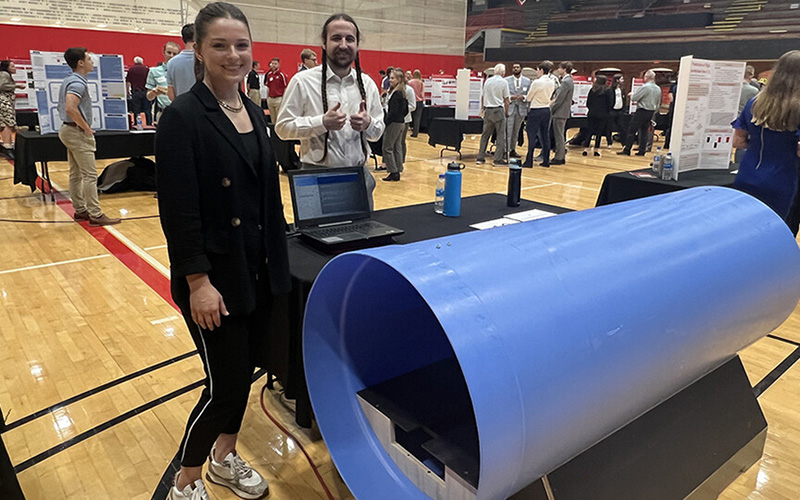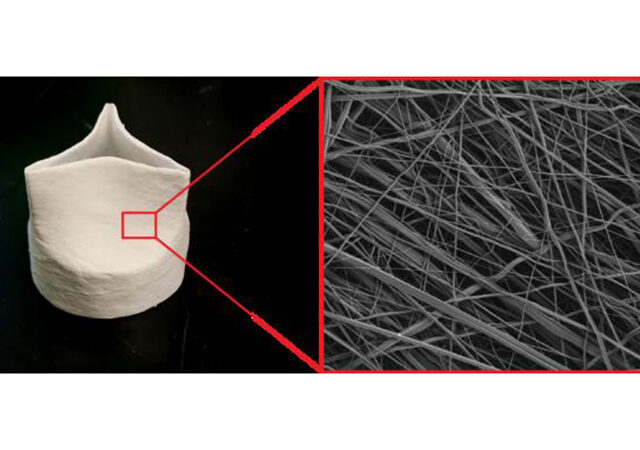The Strategic Air Command and Aerospace Museum in Ashland, Nebraska, has enlisted a team of University of Nebraska–Lincoln engineering students to create an exhibit that will allow museum visitors to experience a slice of the crew’s life aboard one of the world’s biggest combat aircraft.
As a senior design capstone project for the 2022-23 academic year, it also provided valuable, hands-on experience in a real-world, professional engineering setting for four mechanical engineering students: Evan Harner, Alex Kolke, Summer McGrew and Dan Schnoor.
“It only makes sense to me to give these young engineers projects that are real and relative to what they’re going to be doing when they enter the workforce,” said Clayton Anderson, president and CEO of the SAC Museum, aerospace engineer and former NASA astronaut. “When I started here last year, one of the things I hoped to accomplish was to create more interactive activities and opportunities for our museum visitors that build on the history of flight and tie it to the future. In that sense, this project is a win for the museum and the students.”
Known as “the Peacemaker,” the B-36 bomber is literally one of the biggest attractions at the museum. Its 236-foot wingspan is the widest for any piston-engine aircraft ever built.
The B-36 was designed to fly missions of nearly 7,000 miles roundtrip and to stay aloft as long as 40 hours. That requires the crew to sleep while in flight. Accessing the crew compartment in the rear of the plane was possible only by traveling through a pressurized tunnel that linked to the flight deck.
Crew members would lay on a device (a cross between a skateboard and a car mechanic’s creeper) and pull themselves, hand-over-hand, from one end of the plane to the other — about 70 yards — through a tube only three feet wide. In May, at the College of Engineering’s annual Senior Design Showcase, the team displayed a six-foot section of the tunnel.
Anderson said he wanted to make the exhibit as close to a real-life experience as possible and even highlight the similarity of the movements required of flight crew in the tunnel to those required of astronauts on spacewalks.
Kurt Palik, the mechanical and materials engineering faculty capstone adviser, said physical limitations of the tunnel made the students think about making the exhibit more friendly for the museum’s visitors.
“The folks at the museum asked us to make it more comfortable, bigger so people don’t get claustrophobic in there,” said Palik, assistant professor of practice in mechanical and materials engineering. “I think the students have found a happy middle ground.
The interactive tunnel exhibit is currently being constructed at the museum, but technical issues with the installation have caused a delay in having the exhibit ready for the public.
Team members said this created a whole new set of challenges, among them: communicating with a client, supply chain issues and working to meet a deadline.
“One of the biggest (challenges) we’ve faced is overcoming the adversity of our first true engineering project,” Kolke said. “Up to this point, we’ve only done technical calculations, and this is the first time we’ve created a tangible model exhibit from scratch.
“Finishing this one out (was difficult). We got our project a little bit later than most of the other mechanical engineering teams. I’m just happy we’ve been able to keep our heads down and keep pushing forward.”
Both Anderson and Palik said the relationship forged with this project will likely lead to more SAC Museum projects for Nebraska Engineering capstone teams in the future.
“What I’m most excited about is (the mechanical and materials engineering faculty) want to do more projects with this, and I think that’s incredibly cool,” Anderson said. “The engineering college at UNL has been very gracious, offering kids these opportunities, and we actually have a list of projects we’d like to keep doing with them. Kurt says he thinks he can do five more, and I think we’re ready to give him five more.”
Palik said future projects might even be a little more out of this world, right in Anderson’s milieu.
“It’s not just an airplane museum, Clayton said he wants to get more space into it, and he’s asked us try to come up with exhibits that are centered on space flight,” Palik said. “I had some of the students thinking about that and trying to visualize what exhibits might be good to go along with that.”




